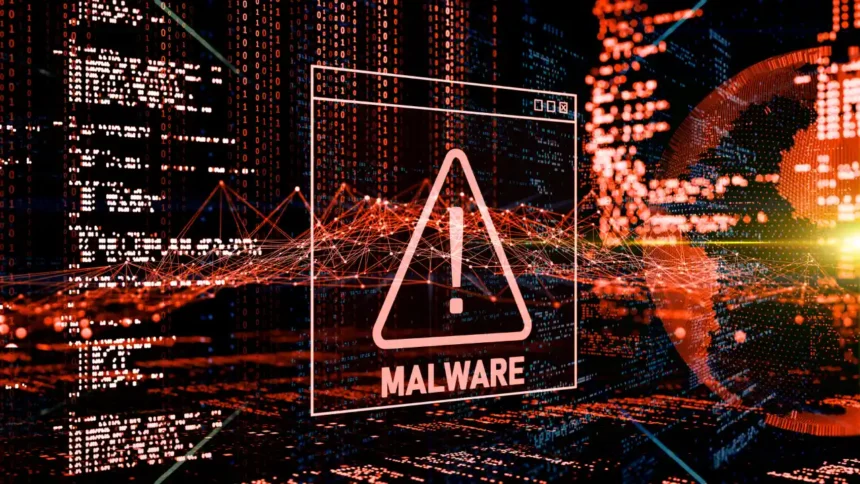Ransomware is one of the most destructive forms of cyber attacks, targeting businesses, government agencies, and individuals alike. This malicious software encrypts files on a victim’s device, demanding a ransom payment in exchange for decryption. Over the past decade, ransomware attacks have surged, leading to significant financial losses, data breaches, and operational disruptions.
Cybercriminals often exploit vulnerabilities in outdated software, weak passwords, or phishing emails to deploy ransomware. Once inside a network, the malware spreads rapidly, locking users out of their own data. This growing threat underscores the need for proactive cybersecurity measures to mitigate risks and protect sensitive information.
Common Tactics Used by Ransomware Operators
Hackers employ various techniques to deliver ransomware, with phishing emails being one of the most common methods. These emails contain malicious attachments or links that, when clicked, execute the ransomware payload. Employees who lack cybersecurity awareness can easily fall prey to such scams, inadvertently allowing attackers to infiltrate networks.
Another tactic involves exploiting software vulnerabilities. Cybercriminals use automated tools to scan for unpatched systems, gaining unauthorized access and deploying ransomware. Additionally, remote desktop protocol (RDP) attacks have become a preferred method, where hackers gain access to a system through weak or stolen login credentials.
The Financial and Operational Toll of Ransomware
Ransomware attacks can have devastating consequences, especially for businesses. The financial impact is often severe, as organizations may be forced to pay hefty ransoms to regain access to their data. However, paying does not guarantee recovery, as attackers may demand additional payments or refuse to provide the decryption key.
Beyond financial losses, ransomware can cripple business operations. Many organizations experience prolonged downtime, disrupting services and leading to loss of customer trust. Moreover, data breaches associated with ransomware attacks can result in regulatory penalties, legal consequences, and reputational damage.
Steps to Prevent Ransomware Attacks
To minimize the risk of falling victim to ransomware, organizations and individuals must adopt a multi-layered cybersecurity approach. Regular software updates and patching vulnerabilities are crucial to preventing attackers from exploiting security gaps. Keeping operating systems, applications, and security software up to date reduces the likelihood of successful cyber attacks.
Implementing strong access controls is another essential step. Using multi-factor authentication (MFA) and enforcing complex passwords can help protect against unauthorized access. Additionally, restricting administrative privileges and segmenting networks can limit the spread of ransomware within an organization.
Importance of Employee Cybersecurity Training
Human error remains one of the biggest cybersecurity vulnerabilities. Organizations should conduct regular training sessions to educate employees about phishing threats and safe online practices. Teaching staff how to recognize suspicious emails, avoid clicking on unknown links, and report potential threats can significantly reduce the risk of cyber attacks.
Simulated phishing exercises can be an effective way to test employees’ awareness and response to potential threats. By fostering a security-conscious workplace culture, businesses can enhance their overall cybersecurity resilience and prevent ransomware incidents.
Backups: A Critical Defense Against Ransomware

One of the most effective ways to mitigate ransomware damage is by maintaining reliable backups. Organizations should implement a robust backup strategy that includes regular data backups stored in secure, offline locations. This ensures that, even if ransomware encrypts files, data can be restored without paying a ransom.
A combination of cloud backups and offline backups provides an extra layer of security. Additionally, testing backups regularly ensures they are functional and up to date, preventing data loss in the event of a cyber attack.
Incident Response Planning for Ransomware Attacks
Having a well-defined incident response plan can help organizations react swiftly to ransomware attacks. This plan should outline the steps to isolate infected systems, notify relevant stakeholders, and coordinate with cybersecurity experts. A quick and efficient response can minimize damage and facilitate recovery.
Businesses should also establish clear protocols for communicating with customers, regulators, and law enforcement agencies. Reporting ransomware incidents can aid in tracking cybercriminal activities and preventing future attacks.
The Role of Cybersecurity Tools and Solutions
Investing in cybersecurity tools is essential for detecting and preventing ransomware attacks. Endpoint protection software, firewalls, and intrusion detection systems can help identify threats before they cause harm. Additionally, security information and event management (SIEM) systems provide real-time monitoring and threat analysis to enhance security posture.
Artificial intelligence (AI) and machine learning-powered cybersecurity solutions are becoming increasingly effective in identifying suspicious activities and mitigating risks. By leveraging advanced security technologies, businesses can stay ahead of evolving cyber threats.
Legal and Regulatory Implications of Ransomware Attacks
Governments and regulatory bodies are tightening cybersecurity laws to combat ransomware attacks. Compliance with data protection regulations, such as the General Data Protection Regulation (GDPR) and the Cybersecurity Maturity Model Certification (CMMC), is essential for businesses handling sensitive information.
Failure to implement proper security measures can result in hefty fines and legal consequences. Organizations must stay informed about evolving cybersecurity laws and take proactive steps to align with regulatory requirements to avoid potential liabilities.
Conclusion: Strengthening Defenses Against Ransomware
Ransomware remains a formidable threat in the digital age, with cybercriminals constantly evolving their tactics. Organizations and individuals must stay vigilant and adopt comprehensive cybersecurity strategies to protect against cyber attacks. Implementing robust security measures, educating employees, maintaining backups, and investing in advanced security tools are critical steps in minimizing ransomware risks.
By prioritizing cybersecurity and staying informed about emerging threats, businesses can reduce their vulnerability to ransomware and ensure a secure digital environment. Prevention, preparedness, and resilience are key to mitigating the impact of ransomware and safeguarding valuable data assets.
